- Apply
- Visit
- Request Info
- Give
Scroll

From a very early age, children are naturally interested in exploring size, shapes, and quantities. Preschoolers begin to count, sort materials by different characteristics, and recognize shapes. These early math abilities prepare them for understanding more advanced mathematical concepts when they enter elementary school.
Early childhood professionals can support children's early mathematical development by:
- Providing materials and experiences that invite children to naturally sort, match, compare, count, and describe quantity
- Supporting these experiences with rich "math talk"
The videos and resources below illustrate strategies and ideas for supporting children's early mathematical development.
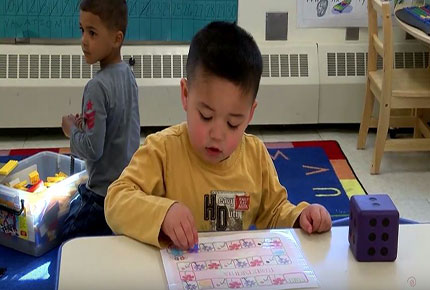 Supporting Mathematical Development in Young Children (series)
Supporting Mathematical Development in Young Children (series)
These videos describe children's early mathematical development and provide examples of how adults can explicitly teach math skills and support their development through daily routines and play. Math areas covered include:
- Counting (3:57)
- One-to-one correspondence (4:08)
- Cardinality (4:42)
- Recognition of quantity (3:49)
- Comparison (3:51)
- Number operations (4:35)
- Measurement (5:30)
- Data (4:37)
- Geometry (5:15)
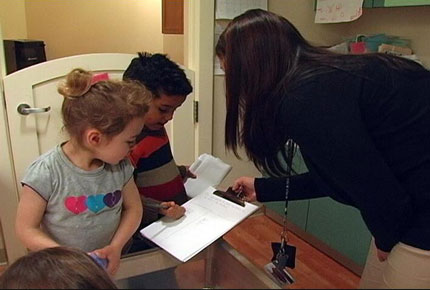 Engaging Preschoolers in Conducting Surveys (2:12, 2023)
Engaging Preschoolers in Conducting Surveys (2:12, 2023)
Niloufar Rezai describes how engaging young children in creating and implementing peer surveys can build children's oral language, writing, early literacy, and numeracy skills. Children are especially interested in talking to their peers when they get to ask a question they created themselves.
Watch video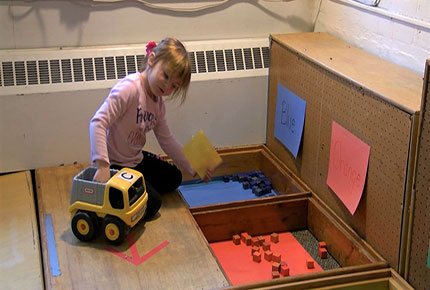 Incorporating Math into Gross Motor Play (2:33, 2018)
Incorporating Math into Gross Motor Play (2:33, 2018)
In this "Reflection from the Field," pPreschool teacher Jessica Abildgaard incorporated a sorting activity in an obstacle course using toy trucks to suit her student’s developmental needs. In order to prepare her students for kindergarten, she wanted to strengthen their numeral identification and sorting skills while incorporating gross motor play. When combining physical movement with toys, she expresses how an activity similar to this can increase student’s mathematical enhancement in fun and creative ways.
See more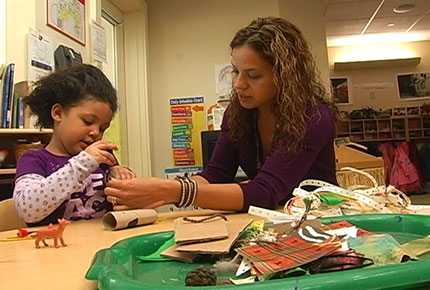 Using Math Talk with Preschoolers to Support Learning (5:17, 2013)
Using Math Talk with Preschoolers to Support Learning (5:17, 2013)
While many preschool classrooms use explicit, teacher-directed activities to help children develop basic math skills, recent research from the Center shows that a lot of math learning occurs within the context of classroom play, especially when teachers are talking with children about how to solve problems involving number. In this e-clip video, Dr. Sudha Swaminathan and Dr. Jeffrey Trawick-Smith discuss the importance of talking with children about numbers and encouraging them to explain their mathematical processes. When teachers and children engage in regular conversations about quantities, measurement, and size, children will gain mathematical and general cognitive skills.
See more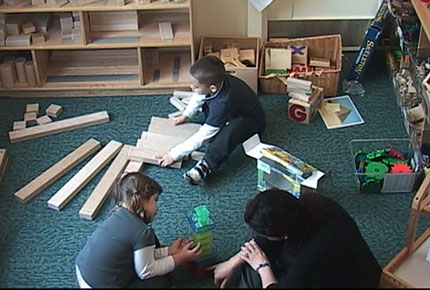 The Relationship of Teacher-Child Interactions in Preschool Play to Young Children's Mathematical Abilities (11:02, 2013)
The Relationship of Teacher-Child Interactions in Preschool Play to Young Children's Mathematical Abilities (11:02, 2013)
Math ability in preschool is one of the best predictors of later school success–research suggests it is a better predictor than early literacy skills. While many studies have found strong relationships between young children’s play and literacy, studies of teacher interactions in play and mathematics learning have not been conducted. This edition of "Research Clips" describes findings from a study aimed at identifying classroom interventions in play that are associated with math achievement in three- and four-year-olds. The findings indicate that how teachers interact with and communicate with children while they play has powerful impacts on children’s mathematical learning.
See more
